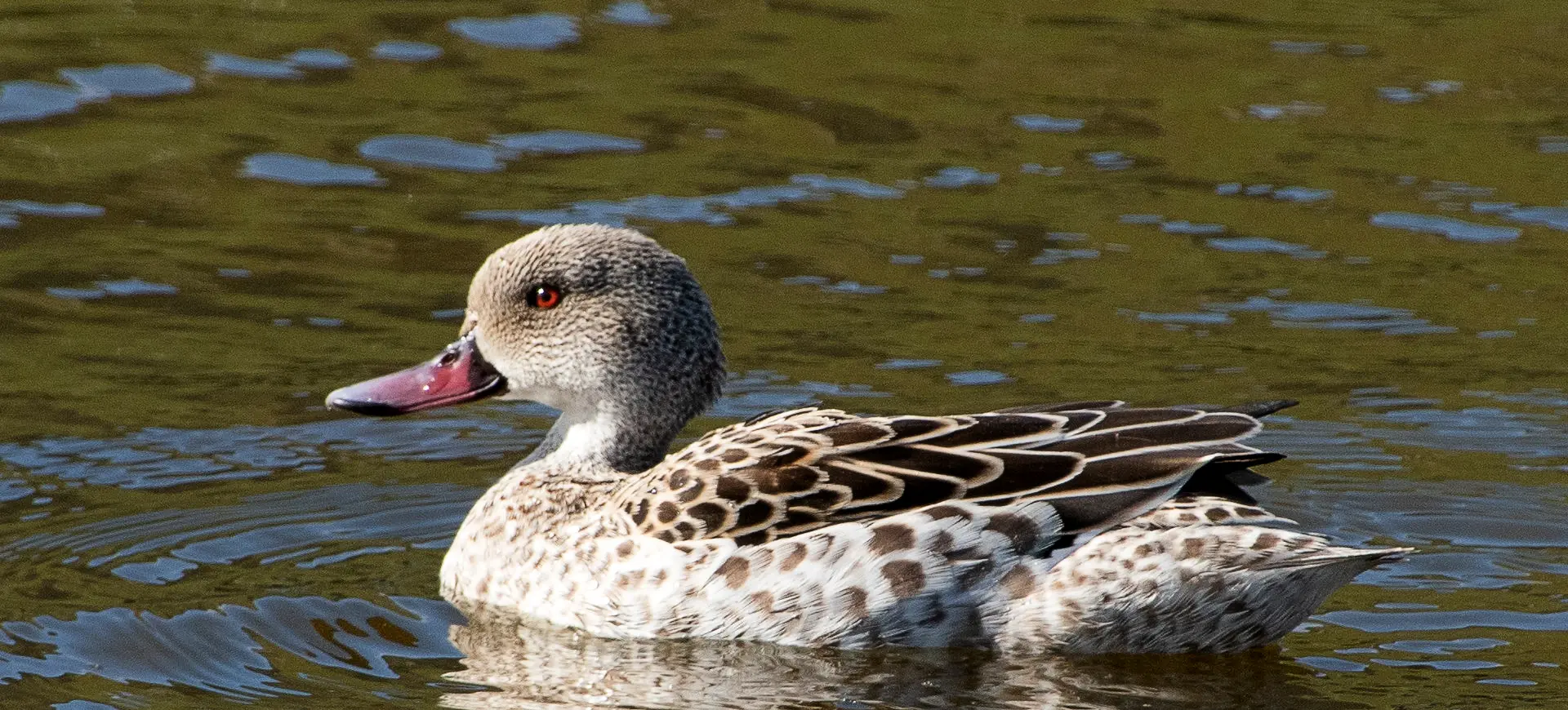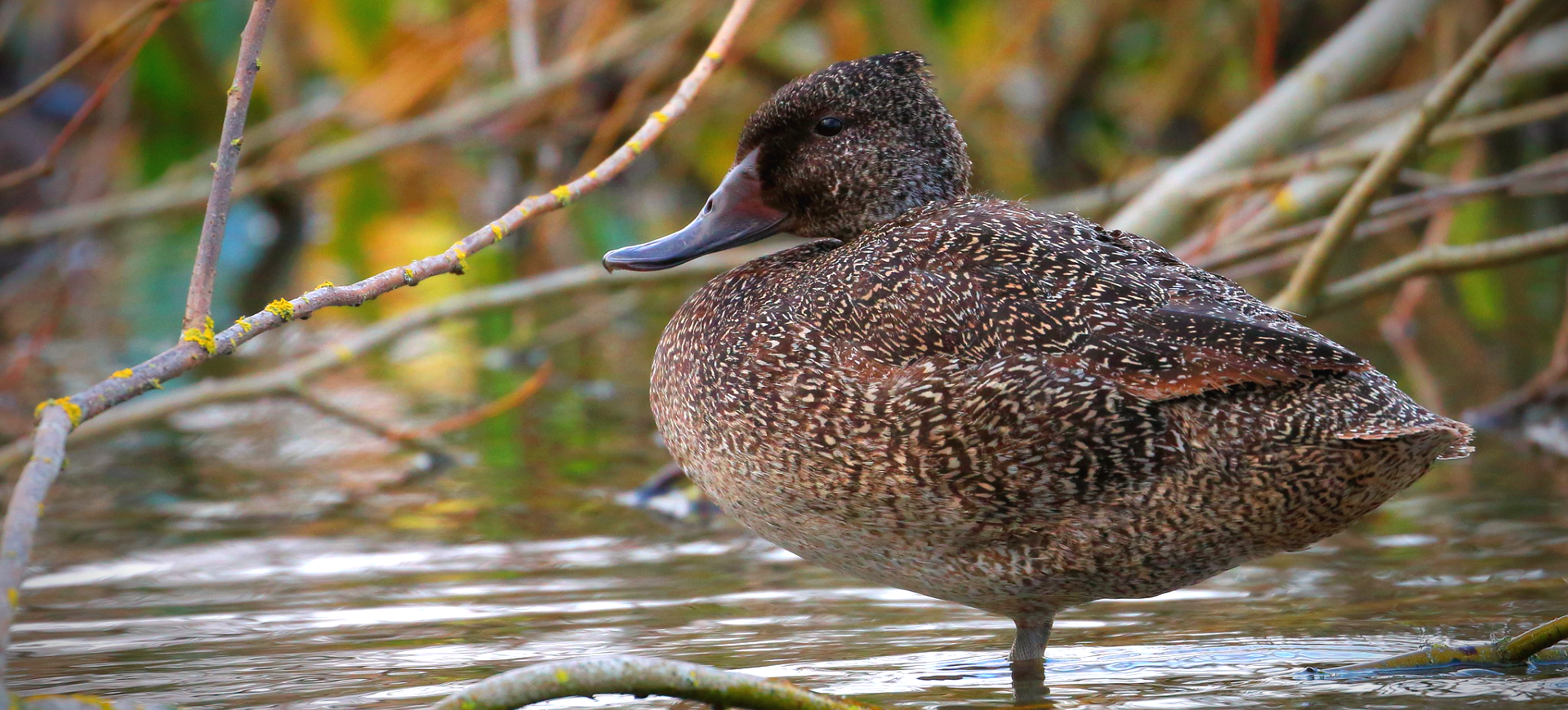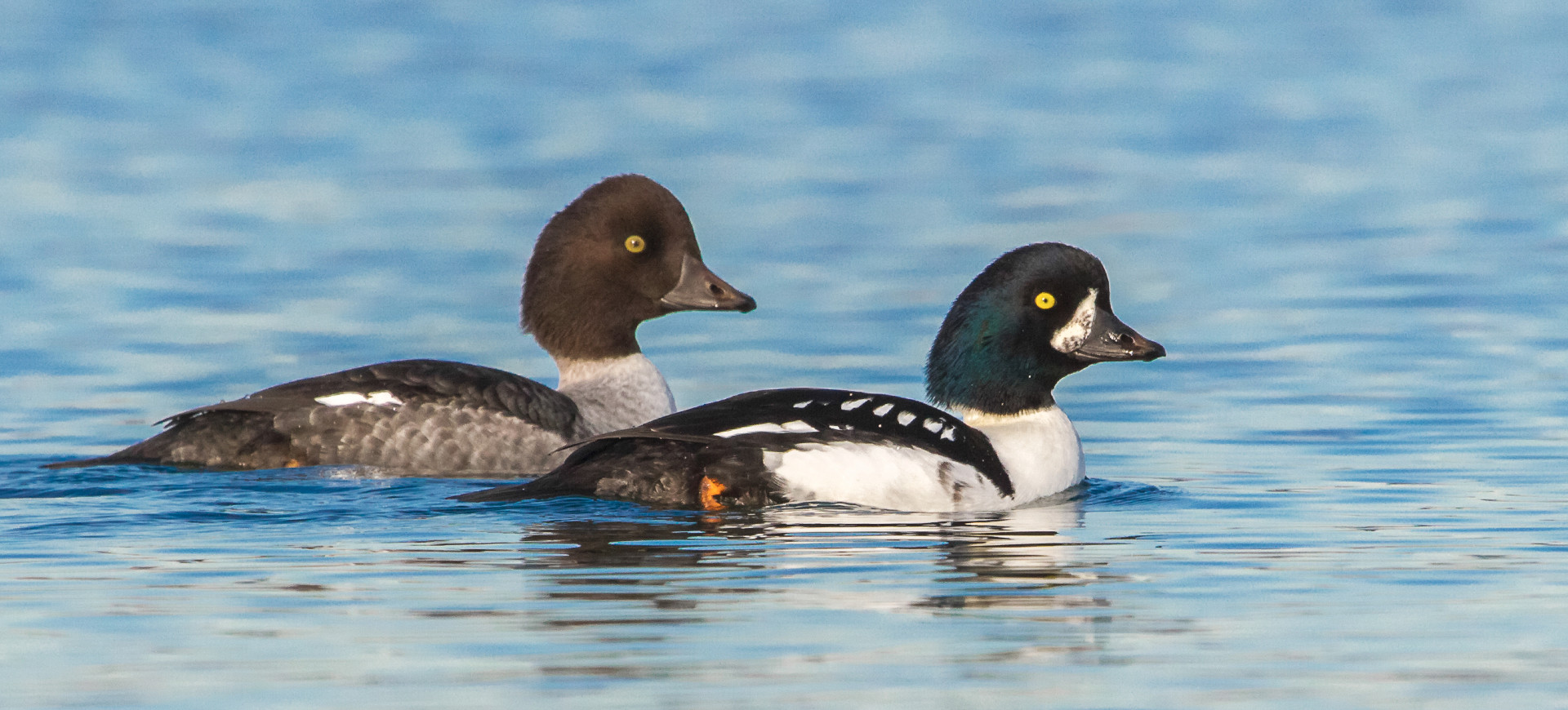Overview
The Australasian Shoveler (Spatula rhynchotis) is a distinctive species of dabbling duck found in Australia, New Zealand, and Tasmania. It is notable for its large, spatulate bill that sets it apart from other ducks. Males exhibit striking plumage with blue-grey heads, white breasts, and chestnut flanks, while females are more subdued in color, featuring mottled brown tones that provide camouflage among reeds and marshes. Both sexes have large, broadbills wider at the tip, enabling them to sift through water and mud for food. They typically measure 46 to 53 cm in length, showcasing adaptations that allow them to thrive in wetland habitats.
Australasian Shovelers prefer shallow wetlands, both freshwater and brackish, where their specialized bills allow them to feed efficiently on aquatic invertebrates, seeds, and plant matter. They are adept at skimming the water’s surface, using their uniquely shaped bills to filter food from the water. Despite their proficiency in water, they are also strong fliers, capable of long-distance migrations between breeding and feeding areas.
Breeding typically occurs in the spring and summer, with these ducks nesting in dense vegetation near water. The nest is a shallow depression lined with down, where the female lays 4-12 eggs. The incubation lasts about 25-30 days, with ducklings being led to water soon after hatching. These ducks are known for their strong pair bonds, often reuniting with the same partner in subsequent breeding seasons.
Taxonomy
Kingdom
Phylum
Class
Order
Family
Genus
Species
Type
Physical Description:
Australasian Shovelers are medium-sized ducks with a robust body and a distinctive large, spatulate bill. Males are particularly colorful during the breeding season, featuring a striking combination of blue-grey heads, white breasts, chestnut flanks, and dark green speculums bordered by white. Females and non-breeding males are more uniformly mottled brown, providing excellent camouflage in their natural wetland habitats.
Their large bills are a defining characteristic and a key adaptation for their feeding behavior, allowing them to sift and filter food from the water more effectively than other duck species. The bill’s sensitive edges detect and trap aquatic prey, making it an essential tool for their survival in diverse wetland ecosystems.

Lifespan: Wild: ~5 Years || Captivity: ~10 Years

Weight: Male: 1.3-1.8 lbs (600-800 g) || Female: 1.1-1.5 lbs (500-700 g)

Length: Male & Female: 18-21 inches (46-53 cm)

Wingspan: Male & Female: 28-33 inches (70-84 cm)

Top Speed: 55 mph (88 km/h)
Characteristic:
Native Habitat:
Australasian Shovelers are found in various wetland habitats across Australia, New Zealand, and Tasmania. They prefer shallow freshwater or brackish wetlands, including marshes, swamps, and lakes, where their specialized feeding techniques can be used effectively. Their habitat selection is influenced by dense vegetation and ample food sources essential for breeding and foraging.
Their ability to inhabit a wide range of wetland types showcases their adaptability and the ecological importance of preserving these habitats for survival. Conservation of wetlands is crucial for maintaining healthy populations of Australasian Shovelers and other species that depend on these ecosystems.
Biomes:
Biogeographical Realms:
Continents:
Countries:
Diet:
Diet & Feeding Habits:
Australasian Shovelers are omnivores, feeding on a diet that includes aquatic invertebrates, seeds, and plant matter. Their large, spatulate bills enable them to filter feed efficiently, skimming the water’s surface and mud for food. This specialized feeding behavior allows them to effectively exploit food resources in their wetland habitats.
They often feed in pairs or small groups, using their bills to sift through water and mud, extracting small aquatic organisms and seeds. Their diet varies seasonally, depending on the availability of different food sources, including algae, plankton, and small crustaceans, during certain times of the year.
Mating Behavior:
Mating Description:
Australasian Shovelers form monogamous pairs during the breeding season, with strong pair bonds often leading to pairs reuniting in subsequent years. Breeding typically occurs in the spring and summer, with the timing influenced by environmental conditions and water availability. Males display elaborate courtship behaviors, including vocalizations and physical displays, to attract females.
Nests are constructed in dense vegetation near or on the water, protecting from predators. The female lays a clutch of 4-12 eggs, which she incubates for about 25-30 days. Ducklings are precocial and leave the nest shortly after hatching, with both parents initially involved in guiding and protecting the ducklings, although the male may leave before they fledge.
Reproduction Season:
Birth Type:
Pregnancy Duration:
Female Name:
Male Name:
Baby Name:
Social Structure Description:
Australasian Shovelers are social ducks, often found in pairs or small groups outside the breeding season. When migrating, they can form larger flocks or in areas with abundant food resources. Their social behavior includes a variety of vocal and physical displays, which facilitate communication and cohesion within groups.
During the breeding season, pairs become more territorial, focusing on nesting and raising their young. The strong pair bonds and cooperative parenting observed in Australasian Shovelers highlight the complex social interactions and behaviors that characterize this species.
Groups:
Conservation Status:
Population Trend:
Population:
Population:
The population of Australasian Shovelers is considered stable, though it can fluctuate locally due to changes in wetland availability and quality. Their adaptability to different wetland habitats has enabled them to maintain healthy populations but remain vulnerable to habitat loss and degradation.
Conservation efforts focus on protecting and restoring wetland habitats, which are critical for breeding and feeding Australasian Shovelers. Establishing protected areas and implementing sustainable water management practices are essential for the long-term conservation of this and other wetland-dependent species.
Population Threats:
The primary threats to Australasian Shovelers include habitat loss and degradation due to agricultural expansion, urban development, and climate change. Pollution and water quality issues also pose significant risks, impacting wetland ecosystems’ health and food source availability for these ducks.
Conservation measures that address these threats, including habitat protection and restoration, sustainable land and water use practices, and pollution control, are crucial for ensuring the survival of Australasian Shovelers and the rich biodiversity of wetland habitats.
Conservation Efforts:
Conservation initiatives for Australasian Shovelers include habitat protection and restoration projects aimed at conserving and expanding wetland areas. Efforts to raise public awareness about the importance of wetlands for biodiversity and ecosystem health are also key components of conservation strategies.
Collaboration between conservation organizations, government agencies, and local communities is essential for effectively managing and protecting wetland habitats. Ongoing research and monitoring help inform conservation strategies and ensure that Australasian Shovelers continue to thrive in their natural habitats.
Additional Resources:
Fun Facts
- Australasian shovelers possess a unique, large, spatulate bill, setting them apart from other duck species and enabling them to sift food from mud and water efficiently.
- Males display striking plumage during the breeding season, with blue-grey heads, white breasts, and chestnut flanks, while females are mottled brown for camouflage.
- They can dive and swim underwater to forage, though they primarily feed by skimming the surface with their broad bills.
- This species is adept at freshwater and brackish environments, showcasing remarkable adaptability to various wetland habitats.
- Australasian Shovelers are known for their strong pair bonds, often reuniting with the same mate across breeding seasons.
- They exhibit nomadic behavior, moving vast distances in response to changing water levels and food availability.
- Australasian Shovelers are fast and agile during flight, reaching up to 55 mph (88 km/h).
- The species plays a crucial role in wetland ecosystems, controlling aquatic invertebrates and plant seed dispersal.
- Australasian Shovelers are social birds outside of the breeding season, forming large flocks that can include thousands of individuals.
- Conservation efforts for Australasian Shovelers focus on protecting and restoring wetland habitats, which are crucial for their feeding and breeding activities.
















































































